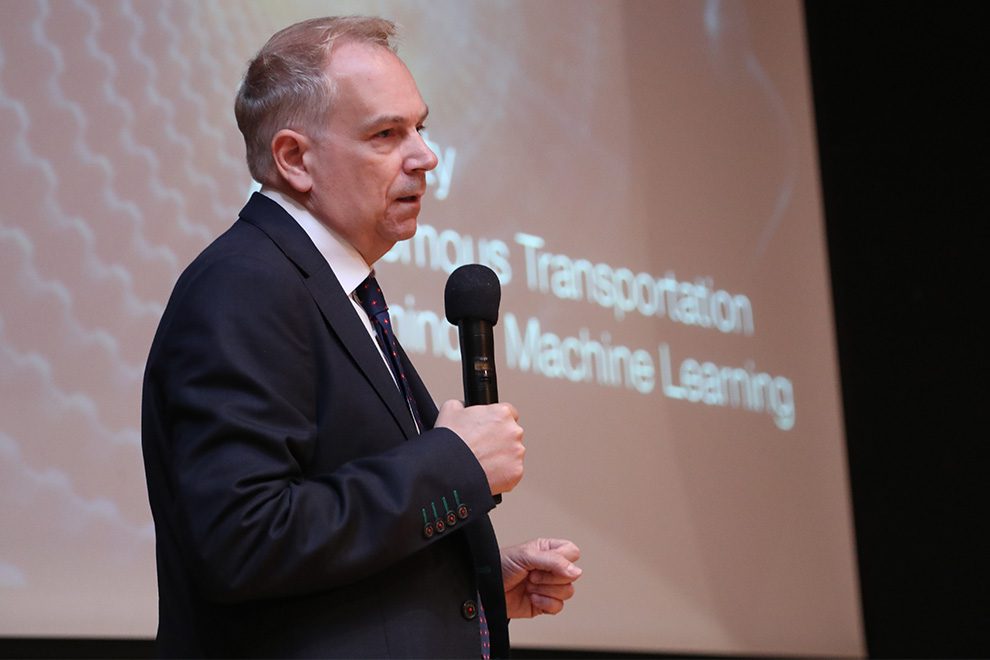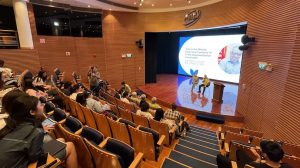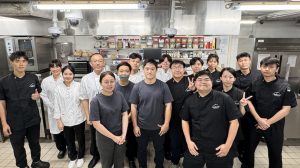Fresh tourism graduates must leave their comfort zones and experiment, says Pacific Asia Travel Association (PATA) Chief Executive Officer Dr. Mario Hardy. His advice was offered at IFT on 13 September, on the sidelines of the PATA Youth Symposium 2017
– Tourism in the Asia-Pacific region has grown rapidly. Is a slowdown expected any time soon?
No. Tourism keeps increasing and growth will continue for quite some time. A lot of it is driven by China. There are more than 280 million people in Mainland China who can afford to travel overseas. There are about 135 million Mainland Chinese who travel overseas each year. There is still a lot of potential for growth. Of course, there are a lot of political changes and these may affect certain destinations for periods of time, either up or down, but globally the industry continues to grow; not only in the Asia-Pacific region but also elsewhere.
– You mentioned the growing importance of the Mainland Chinese market. How can IFT graduates – many of whom have a Chinese background – benefit from that trend?
There are Chinese travellers everywhere in the world and not everyone speaks Mandarin. Staff with that language ability and who can manage huge influxes of tourists are very important. These skills are widely in demand. This is why there are so many people learning Mandarin; they realise it is key to their career development.
“Tourism keeps increasing and growth will continue for quite some time. A lot of it is driven by China”
– An ongoing discussion in tourism is automating process and how that will change the industry. How do you see it impacting on the tourism experience?
We are a service industry. The reality is that being hospitable is being friendly and welcoming to people. I have been in a hotel where there were no humans, managed completely by robots. It was efficient, but it was not pleasant. In the future, there will be a need for both people and automation.
There are jobs such as driving a taxi that, with autonomous cars, will gradually disappear. Certain countries will adopt new technologies faster, others will be slower, so certain jobs will not completely disappear worldwide for a long time. In certain destinations, they might.
In a professional kitchen, for example, there might be some repetitive tasks that could be handled by a machine but chefs – the creative element of a restaurant – are not easily replaceable by robots.
Stay agile
– With so much expected to change in the industry, how can tourism students ensure their knowledge will be relevant in the future?
They should remain curious: read, explore and do some study in different fields. They should remain agile and be able to adapt to a changing environment. If you are agile and curious enough about acquiring different skills, you can adapt to changes more easily. The skills you learn as a student should be general enough that they can be applied to different settings, or different jobs, if that is needed at some point or if the opportunity presents itself.
– Going back to technology, can virtual reality ever replace the tourism experience?
No, I think the opposite. Virtual or augmented reality is a good way for you to experiment, to explore and taste a new destination. With some of the existing technology, I can “transport” myself to Machu Picchu in Peru. I can hear the sounds but I cannot feel the warmth or sense the smells. I certainly have the audio and visual aspect of it, and it is fun and interesting. I can discover new places using virtual reality and say, “Wow, this is really cool. Now I want to go there. I want to feel the real thing”.
Even as technology evolves and improves, I still think people will want to travel and explore. We, as businesses, can use new technologies as teaser to get people interested in a destination.
“There are solutions for overtourism… At PATA, we have been promoting for almost 4 years now what we call the ‘dispersal of tourism’ or the better distribution of tourists”
– If tourism keeps growing, will there be a greater need for destinations to control incoming tourists?
There are many cities suffering from overtourism. Some famous examples are Barcelona and Venice, but there are many other places around the world and in Asia suffering from it. Bali is another good example, as are sites such as Angkor Wat. I call it the Bucket List Phenomenon. There are solutions for overtourism. Some countries have started to implement those. At PATA, we have been promoting for almost 4 years now what we call the “dispersal of tourism” or the better distribution of tourists. There is much more to Indonesia than Bali and there is much more to Cambodia than Angkor Wat. There are thousands of beautiful sites, provinces and cities that have not yet been explored by tourists because they just don’t know about them. Destinations and businesses need to do a much better job at promoting not only a single point of interest but multiple points and to create itineraries for people to go and explore other places. Technology could be helpful in achieving this.
– What is the biggest mistake fresh graduates in tourism might make as they start in the industry?
Not taking enough risk or going to a safe job in a safe environment and sticking to it for too long. I have made that mistake. In retrospect, when I think about my career, it took me a long time to get comfortable to explore and do new things. I now realise that if I had acted earlier, I could have achieved amazing things. I am trying to achieve them now, much later than I initially thought.









